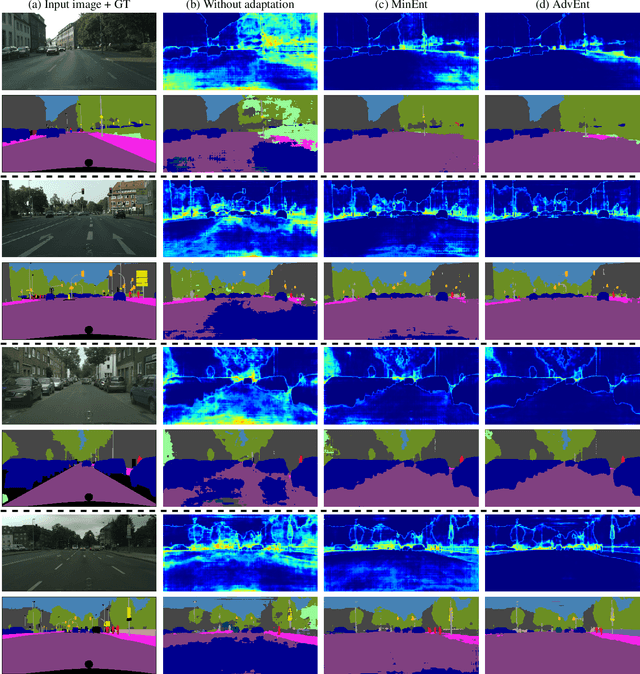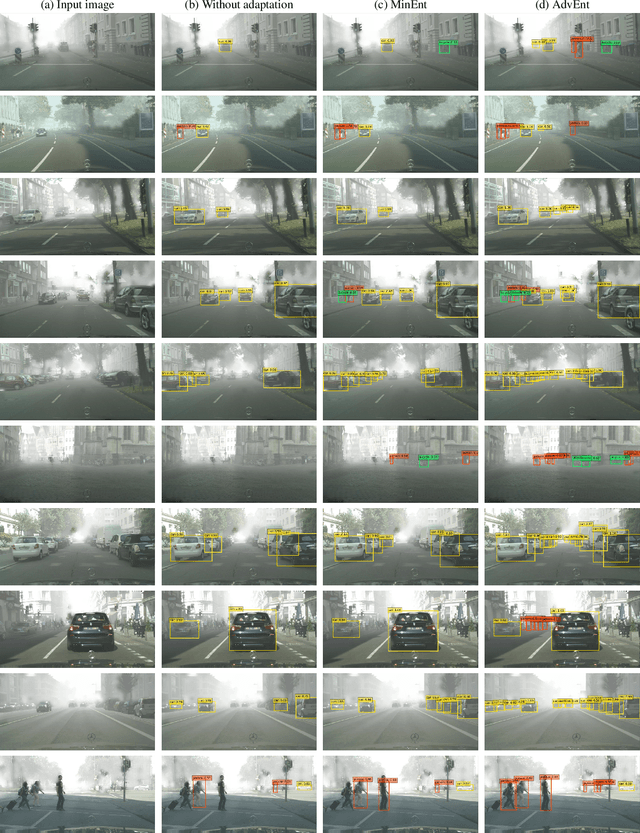ADVENT: Adversarial Entropy Minimization for Domain Adaptation in Semantic Segmentation
Paper and Code
Nov 30, 2018

Semantic segmentation is a key problem for many computer vision tasks. While approaches based on convolutional neural networks constantly break new records on different benchmarks, generalizing well to diverse testing environments remains a major challenge. In numerous real world applications, there is indeed a large gap between data distributions in train and test domains, which results in severe performance loss at run-time. In this work, we address the task of unsupervised domain adaptation in semantic segmentation with losses based on the entropy of the pixel-wise predictions. To this end, we propose two novel, complementary methods using (i) entropy loss and (ii) adversarial loss respectively. We demonstrate state-of-the-art performance in semantic segmentation on two challenging "synthetic-2-real" set-ups and show that the approach can also be used for detection.
 Add to Chrome
Add to Chrome Add to Firefox
Add to Firefox Add to Edge
Add to Edge